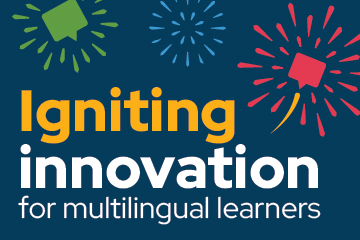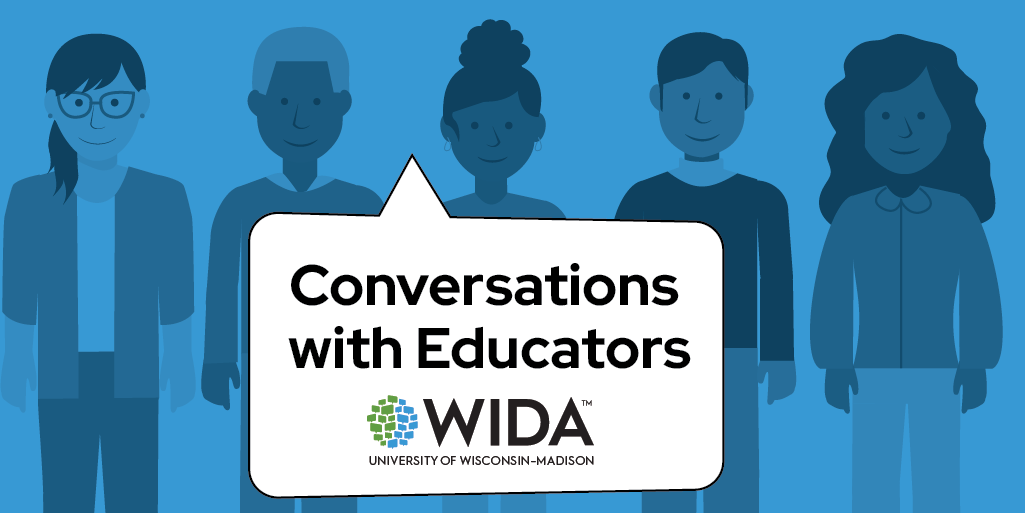Resources/Recursos
Featured Resources



All resources/Todos los recursos
Filter resources by:
Resources/Recursos
Implementation of the English Language Proficiency Standards Across the WIDA Consortium
This paper finds that many educators see the WIDA English language proficiency standards as a tool that can guide them in differentiating instruction and supporting language development among English language learners.
Resource DetailsReleased November 2013
English Language Arts
The purpose of this WIDA Focus Bulletin is to provide guidance to teachers of English language arts (ELA) who are implementing the Common Core State Standards (CCSS) and working to respond to the specific needs of ELLs. In their treatment of academic language (or the language of school), the CCSS represent a departure from existing content standards.
Published November 2013
Authors: Daniella Molle, Mariana Castro, Julia Cortada, Leslie Grimm
Released November 2013
Response to Instruction and Intervention Planning Form
The RtI2 planning form is a resource to guide local educators in implementing a RtI² plan for their multilingual learners. The form accompanies the book Developing a Culturally and Linguistically Responsive Approach to Response to Instruction & Intervention (RtI²) for English Language Learners: Connecting to WIDA Standards, Assessments, and Other Resources.
Resource Details View Download NowReleased October 2013
Tool to Evaluate Language Complexity of Test Items
This paper focuses on the creation of an instructional hyper textbook that serves as a personal environment for learning a less-commonly-taught language, Turkish in this case. It shows how digital personal environments can advance self-regulated language learning in tandem with more formal learning strategies.
Resource DetailsReleased July 2013
Implementation of the English Language Proficiency Standards Across the WIDA Consortium
This study examined the ways in which educators across the WIDA Consortium use WIDA’s English language proficiency standards, and in particular the model performance indicators (MPIs).
Published May 2013
Author: Daniella Molle
Released May 2013
Title III National Evaluation Supplemental Report
This report addresses three primary questions:
1. How do you determine a meaningful English language performance standard?
2. How do you establish a realistic, empirically anchored time frame for attaining a given ELP performance standard?
3. How can states take into account English learners’ English language performance level when setting academic progress and proficiency expectations?
Published May 2013
Resource Details View Download NowReleased May 2013
Collaborating with States on Professional Development Planning
This study investigated a coaching process in which state educational representatives (SEAs) and WIDA staff engaged during 2012. The purpose was to enhance the quality of the professional development offered by states to their educators.
Published May 2013
Authors: Daniella Molle, Christie Reveles
Released May 2013
Can Do Booklet Grades 9-12
This booklet complements the WIDA English Language Proficiency Standards and provides a valuable set of resources aligned to the Performance Definitions for the levels of English language proficiency.
Resource Details View Download NowReleased April 2013
Can Do Booklet Grades 6-8
This booklet complements the WIDA English Language Proficiency Standards and provides a valuable set of resources aligned to the Performance Definitions for the levels of English language proficiency.
Resource Details View Download NowReleased April 2013
Can Do Booklet Grades 1-2
This booklet complements the WIDA English Language Proficiency Standards and provides a valuable set of resources aligned to the Performance Definitions for the levels of English language proficiency.
Resource Details View Download NowReleased April 2013
Can Do Booklet Grades 3-5
This booklet complements the WIDA English Language Proficiency Standards and provides a valuable set of resources aligned to the Performance Definitions for the levels of English language proficiency.
Resource Details View Download NowReleased April 2013
Can Do Descriptors, Original Edition, Student Name Charts, Grades K-12
This chart allows educators to track students by their level of English language proficiency.
Resource Details View Download NowReleased April 2013
Examining How To Establish English Proficiency Using Alternate Composite Scores
The goal of the analyses presented here is to identify a procedure for creating alternate composite scores on English language proficiency assessments without using all four domain test scores (i.e., listening, speaking, reading and writing).
Published April 2013
Author: H. Gary Cook
Released April 2013
WIDA MODEL Technical Report Grades 1-2 and 3-5
This 2012 report describes the development, validity and reliability of the WIDA MODEL assessment for Grades 1-2 and 3-5.
Resource Details View Download NowReleased May 2012
English Language Proficiency Standards Grade 6 Through Grade 12, 2007 Edition
The 2007 ELP Standards for grades 6-12 reflected the social and academic dimensions of acquiring a second language that were expected of ELLs in grades 6-12 attending schools in the United States. Each ELP standard addressed a specific context for English language development.
Resource Details View Download NowReleased July 2009
English Language Proficiency Standards PreKindergarten Through Grade 5, 2007 Edition
The 2007 ELP Standards for grades PreK-5 reflected the social and academic dimensions of acquiring a second language that were expected of ELLs in grades PreK-5 attending schools in the United States. Each ELP standard addressed a specific context for English language development.
Resource Details View Download NowReleased July 2009




